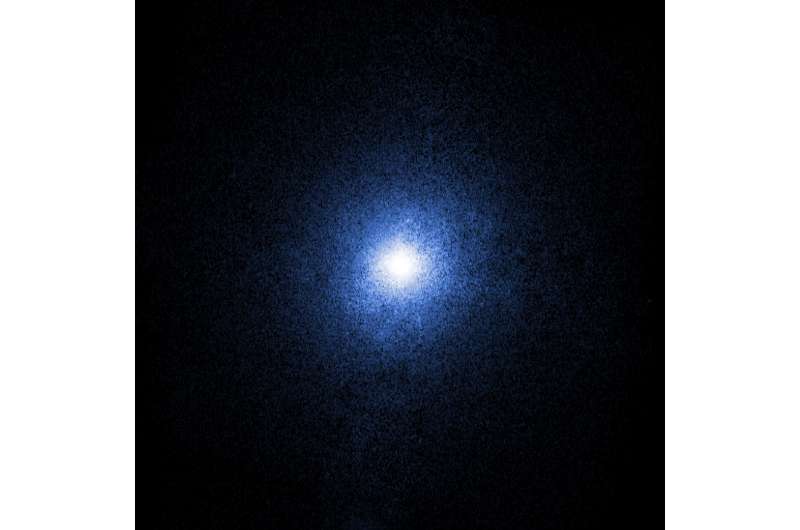Quasi-periodic oscillation detected in Cygnus X-1

Using the Hard X-ray Modulation Telescope (HXMT), astronomers from Shanghai Astronomical Observatory in China have detected a low frequency, quasi-periodic oscillation in a black hole high mass X-ray binary known as Cygnus X-1. The finding is reported in a paper published April 29 .
X-ray binaries consist of a normal star or a white dwarf transferring mass onto a compact neutron star or a black hole. Based on the mass of the companion star, astronomers divide them into low-mass X-ray binaries (LMXBs) and high-mass X-ray binaries (HMXBs).
X-ray binaries may exhibit X-ray variability in the form of relatively sharp quasi-periodic oscillations (QPOs) with millihertz (mHz) to kilohertz (kHz) frequencies. Researchers believe that QPOs occur when X-rays are emitted near the inner edge of an accretion disk in which gas swirls onto a compact object like a neutron star or a black hole. Generally, QPOs are divided into type-A, -B, and -C, according to their frequency, amplitude and coherence.
Located some 6,100 light years away from the Earth in the constellation Cygnus, Cygnus X-1 is a bright, persistent HMXB consisting of a black hole accreting matter from an OB star. Previous observations of this source have shown that its X-ray emission undergoes dramatic changes in spectral distribution and brightness.
Now, a team of astronomers led by Zhen Yan reports the detection of a short-lived, low frequency QPO in Cygnus X-1. The finding was made using HXMT (also known as Insight), China’s first X-ray astronomy satellite.
“In this paper, we report the detection of a mHz QPO in one of the Insight-HXMT observations of Cygnus X-1 during the soft state,” the researchers wrote in the study.
The QPO was detected at 88 mHz, during the first 200 minutes of the longest HXMT observation of Cygnus X-1 that took place in August 2017. The fractional root-mean-square (RMS) amplitude of this QPO appears to be energy independent as it decreases at lower energy.
HXMT data suggest that the mHz QPO identified in Cygnus X-1 is different from the type-A, -B, and -C QPOs usually observed in black hole X-ray binaries (BH XRBs). For instance, it has a large quality factor, which is similar to the type-C QPOs, however, its frequency and RMS are smaller than most type-C QPOs observed in other BH XRBs.
The results also allowed the astronomers to shed more light into the parameters of Cygnus X-1. The data indicate that the system has an orbital period of about 5.6 days, the black hole mass is approximately 21.2 solar masses, and its distance is greater than previously thought—some 7,200 light years.
In concluding remarks, the researchers offered an explanation to the origin of QPOs found in similar systems.
“We compare QPOs at similar frequencies that have been previously detected in another persistent high mass X-ray binaries in the soft state, we speculate that such QPOs might relate to some local inhomogeneity rarely formed in the accretion flow of wind-fed accretion systems,” the authors of the paper wrote.



 Creators of mankind
Creators of mankind Description of “Tall white aliens”
Description of “Tall white aliens” Where they came from?
Where they came from? About hostile civilizations
About hostile civilizations The war for the Earth
The war for the Earth “Tall white aliens” about eternal life
“Tall white aliens” about eternal life Video: “Nordic aliens”
Video: “Nordic aliens” Aliens
Aliens Alien encounters
Alien encounters The aliens base
The aliens base UFO
UFO Technology UFO
Technology UFO Underground civilization
Underground civilization Ancient alien artifacts
Ancient alien artifacts Military and UFO
Military and UFO Mysteries and hypotheses
Mysteries and hypotheses Scientific facts
Scientific facts


















